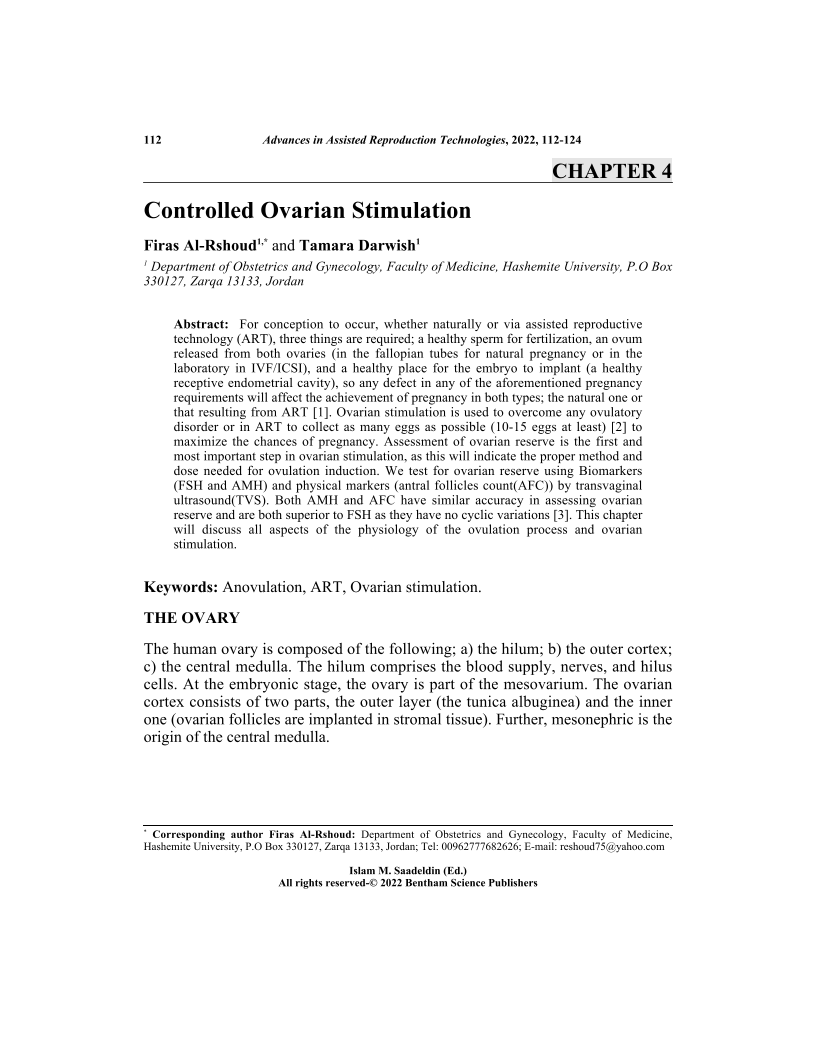Controlled Ovarian Stimulation

- Authors: Firas Al Rshoud1, Tamara Darwish2
-
View Affiliations Hide Affiliations1 Department of Obstetrics and Gynecology, Faculty of Medicine, Hashemite University, P.O Box330127, Zarqa 13133, Jordan 2 Department of Obstetrics and Gynecology, Faculty of Medicine, Hashemite University, P.O Box330127, Zarqa 13133, Jordan
- Source: Advances in Assisted Reproduction Technologies , pp 112-124
- Publication Date: August 2022
- Language: English
Controlled Ovarian Stimulation, Page 1 of 1
< Previous page | Next page > /docserver/preview/fulltext/9789815051667/chap4-1.gif
For conception to occur, whether naturally or via assisted reproductive technology (ART), three things are required; a healthy sperm for fertilization, an ovum released from both ovaries (in the fallopian tubes for natural pregnancy or in the laboratory in IVF/ICSI), and a healthy place for the embryo to implant (a healthy receptive endometrial cavity), so any defect in any of the aforementioned pregnancy requirements will affect the achievement of pregnancy in both types; the natural one or that resulting from ART [1]. Ovarian stimulation is used to overcome any ovulatory disorder or in ART to collect as many eggs as possible (10-15 eggs at least) [2] to maximize the chances of pregnancy. Assessment of ovarian reserve is the first and most important step in ovarian stimulation, as this will indicate the proper method and dose needed for ovulation induction. We test for ovarian reserve using Biomarkers (FSH and AMH) and physical markers (antral follicles count(AFC)) by transvaginal ultrasound(TVS). Both AMH and AFC have similar accuracy in assessing ovarian reserve and are both superior to FSH as they have no cyclic variations [3]. This chapter will discuss all aspects of the physiology of the ovulation process and ovarian stimulation.
-
From This Site
/content/books/9789815051667.chap4dcterms_subject,pub_keyword-contentType:Journal -contentType:Figure -contentType:Table -contentType:SupplementaryData105

